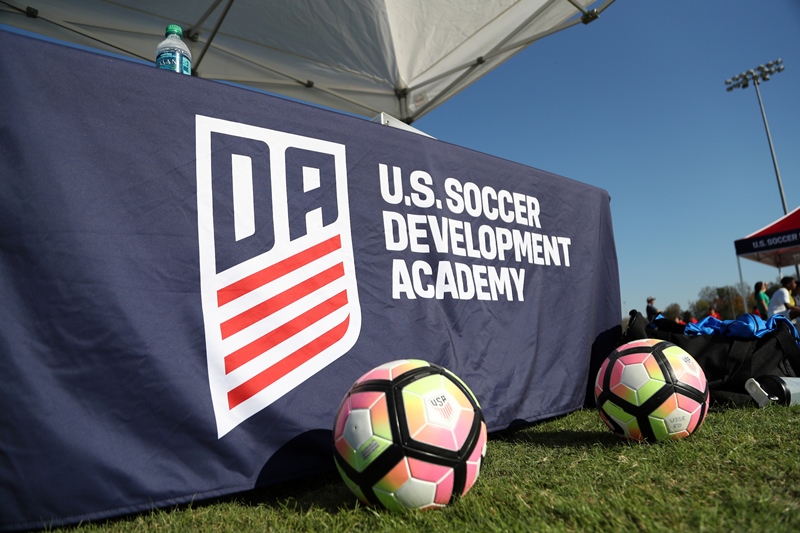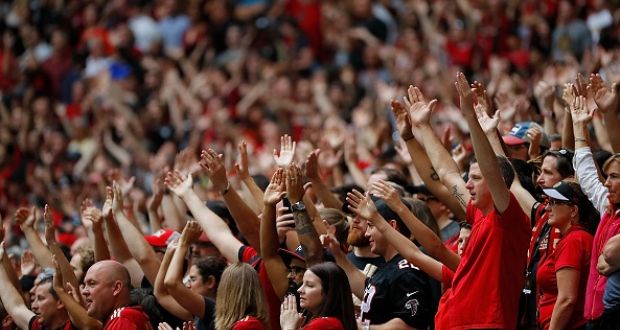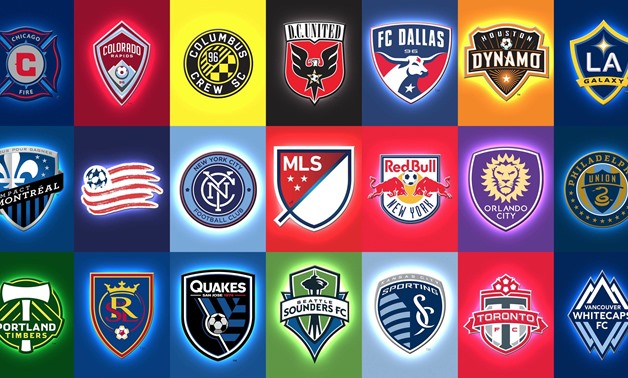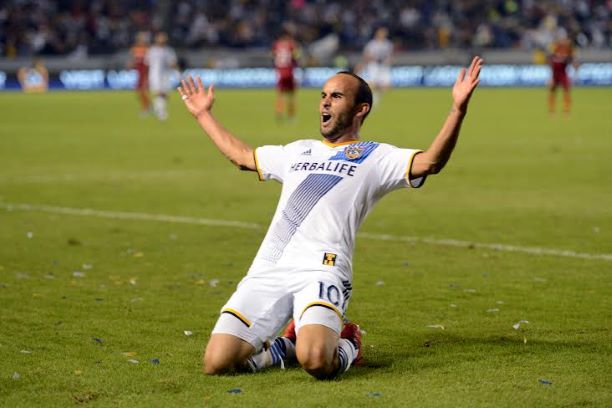Bilbao wasn’t built in a day: Part Three
Bilbao wasn’t built in a day: Part Three
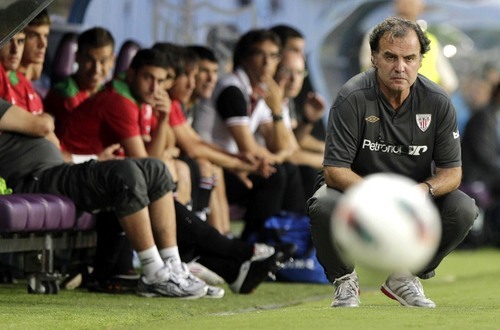

Spanish football blogger Chalkontheboots continues his analysis of the current structure of Athletic Bilbao by examining Marcelo Bielsa’s struggle between pragmatism and idealism, as he searches for the perfect tactical approach for the situation. You can read part two of this piece here.
Should Bielsa alter his beliefs and accommodate a more pragmatic streak within his football?
For so long an advocate of pro-active attacking football with a strong emphasis on the vertical approach, does Bielsa need to alter his thinking and shift his tactical plan to allow for a more defensive perspective when required?
Or is Bielsa a fundamentalist, a man who recognises the inherent problems with his preferred system but remains unwilling to compromise, determined to maintain his views to the bitter end, even if they eventually cause his downfall?
From the outside, Bielsa appears so fundamentally attached to his views, that he will take them to their logical conclusion, defending them and his team irrespective of the havoc it could create. It is the re-emergence of the stubborn streak. It is Bielsa’s genius and his burden.
Always an innovator, the tactical developments he has made have heavily influenced a number of key themes in the modern game especially at Barcelona were Guardiola cited Bielsa as the “best coach in the world”. And the same dogmatic approach that is apparent in Bielsa was obvious too in Guardiola as his Barcelona tenure drew to a conclusion. The faith in the system which meant playing with fewer defenders and adopting high defensive lines against deep lying counter attacking teams. The beauty of the game cherished although it was always viewed through a pragmatic prism to a certain extent. The beautiful football delivered therefore to continue success, keep playing more beautiful football. Athletic need to exhibit this trait.
The reactive football of Atletico Madrid in the European League Final highlighted the conundrum perfectly. Atletico were content to let Athletic dominate possession in deep areas before springing counter attacks when Athletic overcommitted. Athletic weaved pretty patterns across the pitch but lacked sufficient nous to break down the mass ranks of Atletico.
Was this a tactical problem or were Athletic showing signs of fatigue?
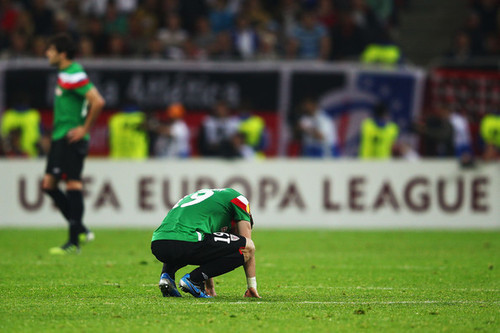
Athletic are vulnerable to the counter attack and specifically in two areas. There is space behind both full backs, especially Iraola who attacks much more than Autenexte. This can be exploited by long diagonals in behind the full backs which pulls the centre backs wide. Javi Martinez does not enjoy moving wide at all and is weak when forced to turn quickly.
Secondly, when Athletic press, both Herrera and De Marcos push very high supporting the attack to provide opportunities for combination play and provide options from the second line. This leaves Iturraspe with two choices. He can stay close to the centre backs and leave space in front of himself or he can push further forward and leave space behind him. Either way, the central area can also be exposed in a quick counter attack by a clever opponent.
To prevent being exploited by counter attacks when forward moves break down, Athletic must press opponents quickly. It’s an extremely demanding strategy.
A greater degree of control in the central area is required, both when in possession and when out of possession. Retaining shape quickly is the legal method of maintaining control. The illegal method would be conceding calculated fouls high up the pitch. Athletic are an average side in terms of fouls committed and disciplinary sanctions. This contrasted sharply with Chile under Bielsa who adopted a broadly similar system but who committed numerous fouls high up the pitch to allow the team to regain shape. It was a strategy adopted by Barcelona in the early days under Guardiola. Eto'o, Messi and Henry each committing more fouls than anyone else in the Barcelona team during one season.
It’s a ploy which is negative and will be publicly criticised especially when juxtaposed against the beautiful game. It’s also a ploy which would work and strengthen Athletic considerably. Sanctions will accumulate and player suspensions will occur more frequently. Last season, Iturraspe gathered more yellow cards than any other Athletic player. Why? Because he was caught out of position when he pushed too high in the central area of the pitch.
As Muniain matures, it is surely only a matter of time before he adopts a more central position from the outset of games. If he does so, Ibai Gomez is ready to slot into the left wing berth. This would force a personnel decision to be made. Iturraspe is essential in a deep lying position offering vertical movement between defence and midfield. For Muniain to be integrated centrally, Herrera or De Marcos need to be dropped.
This is where Bielsa must modify his outlook and his team selection dependent upon the opposition. When Athletic need to take the game to opponents, Muniain should start centrally with De Marcos dropping to the bench. When a more conservative approach is needed, Muniain should begin on the left and De Marcos would provide the hard running approach from midfield, able to close opponents down quickly, supporting both defence and attack.
This rotation of players forms a crucial aspect of Athletic’s development too. Markel Susaeta played in all sixty-four games for Athletic last season. This may seem like a normal amount of games for a player operating at the top end of the game. Indeed, over the last four seasons, Xavi Hernandez has averaged sixty-six games per season.

But consider the manner in which Athletic play.
The intensity, the pressing, the incessant running. Delivering sixty four high level performances under such conditions is extremely challenging. It’s perhaps why Bielsa removed a number of older players from the squad. Could the older players manage to adapt to such a demanding philosophy? Indeed, would older players willingly accept what Bielsa was demanding from his players?
Squad rotation has to be introduced earlier in the season and with greater frequency.
Running in tandem with these tactical changes, there is also the need to acquire wisely to supplement the shallow squad.
When operating with a pool of around 18 first team players, rotation becomes difficult and the drop in quality between a first choice player like Llorente and a squad player such as Torqero is considerable. This is not to denigrate the qualities that Torqero brings to the squad but they differ considerably from Llorente and the drop in class is apparent.
You can follow Chalkontheboots on Twitter at @chalkontheboots, and see more on his blog, also titled Chalk on the Boots. The final part of this piece will appear here later in the week.

